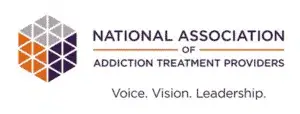Key Takeaways
- Substance use is a significant issue in the Army, with high rates of tobacco, alcohol, and prescription drug misuse among personnel and veterans.
- Military personnel face unique stressors such as deployment and combat exposure, contributing to higher rates of substance use disorders compared to civilians.
- Substance use in the military is linked to mental health challenges like PTSD, which often co-occur with substance use disorders, complicating treatment.
- Army personnel who misuse substances may face career consequences, including disciplinary actions or separation from service.
- The Army Substance Abuse Program (ASAP) provides comprehensive prevention and treatment programs to combat substance misuse and enhance combat readiness.
- Prevention programs like ‘Too Much to Lose’ and ‘Own Your Limits’ aim to educate service members on responsible substance use.
- ASAP’s treatment programs offer a range of services, including therapy and medication-assisted treatment, tailored to the needs of military personnel.
Substance Abuse Prevalence in Army Personnel
The prevalence of substance use among army personnel has been a concern, with various studies highlighting the magnitude of the issue.
Tobacco Use:
- In 2015, 9% of military personnel were current cigar smokers.
- Approximately 13% used smokeless tobacco.
Alcohol Consumption:
- 56.6% of veterans reported alcohol use within a one-month period.
- 7.5% engaged in heavy drinking during the same period.
- 65% of veterans seeking treatment cited alcohol as their primary concern.
Prescription Drug Misuse:
This Season, Give Yourself the Gift of a Fresh Start.
Whether you are struggling with addiction, mental health or both, our expert team is here to guide you every step of the way. Don’t wait— reach out today to take the first step toward taking control of your life.
- Over 4% of active-duty service members admitted to prescription drug misuse in the past year.
Military vs. Civilian Populations: Substance Abuse Rates
Comparative Usage:
- Veterans exhibit higher tobacco use and heavy alcohol consumption rates than the general population.
- NIDA also notes that 65% of veterans in treatment programs identify alcohol as their primary misuse, compared to lower civilian rates.
Deployment and Risk:
- Deployed service members have a 44% rate of substance use disorder diagnoses post-deployment, higher than civilians.
- Stigma surrounding deployment impacts referral rates to substance use disorder treatment.
Drug Testing Results:
- In 2014, positive drug test rates varied among branches: Army (1.04%), Navy (0.37%), Marines (0.60%), Air Force (0.39%).
RAND Corporation Findings:
- RAND Corporation highlights the costs and adverse outcomes associated with alcohol misuse in the military.
Contributing Factors: Substance Abuse Among Army Personnel
Substance use in the Army is influenced by a multitude of factors that intersect with demographic characteristics, environmental stressors, and specific challenges inherent to military life.
Demographic Factors:
- Younger, less educated, unmarried males of lower military rank (E1-E3) show higher susceptibility to substance use.
Environmental Stressors:
- Deployment, combat exposure, and challenges during reintegration into civilian life increase the risk of substance use disorders (SUDs).
- Transition to medical discharge and prescription of pain medications are critical periods for potential substance misuse.
Prevalence Among Veterans:
- Alcohol and tobacco are frequently misused substances among veterans.
- High tobacco use incurs significant healthcare costs for the Veterans Health Administration.
- Co-occurring mental health challenges like PTSD, depression, and anxiety complicate treatment.
Preventive Strategies:
- Department of Defense (DOD) initiatives promote responsible drinking, discourage illicit drug use, and advocate responsible prescription drug use.
- The Army Substance Abuse Program (ASAP) supports combat readiness by addressing non-clinical alcohol and drug policy issues.
Combat Exposure: Its Influence on Substance Abuse in the Army
Combat exposure presents significant risks for the development of PTSD among army personnel, thereby increasing the likelihood of substance use as a coping mechanism.
- Risk Factors:
- Combat exposure increases the likelihood of developing PTSD among army personnel.
- The National Center for PTSD identifies life-threatening events, witnessing death or injury, and violent engagements as contributing factors.
- Research indicates that the complex pathophysiology of PTSD, often co-occurring with other mental disorders, makes diagnosis and treatment challenging.
- PTSD Statistics:
- Approximately 2.2% of active-duty service members were diagnosed with PTSD in 2021.
- PTSD can lead to substance use as a coping mechanism due to its impact on mental health.
- Traumatic Brain Injuries (TBI):
- Data also suggest that TBIs sustained in combat correlate with psychological health issues and potential substance use as self-medication.
- Impact of Trauma and Stress:
- Trauma and stress can alter brain structure and function, increasing susceptibility to addiction.
- Studies have found that social isolation can have a direct negative effect on PTSD symptoms and, by extension, substance use.
Military Culture: Its Influence on Substance Use Disorders
According to research, military culture plays a significant role in shaping the prevalence and management of substance use disorders (SUDs) among service members, influencing both risk factors and treatment approaches.
- Cultural Norms and Stressors:
- Military culture emphasizes toughness and self-reliance, which can exacerbate substance use issues.
- Training, deployment stress, and reintegration challenges contribute to higher susceptibility.
- Mental Health Challenges:
- PTSD and depression from combat exposure increase the risk of SUDs.
- Veterans with PTSD are prone to co-occurring substance misuse, especially alcohol.
- Transition to Civilian Life:
- The shift from active duty to civilian life introduces unique stressors that may increase substance use.
- Programs and Challenges:
- Military initiatives include smoking cessation and pain medication reduction policies.
- Stigma associated with seeking help remains a barrier to treatment for mental health and substance use issues.
Consequences: Substance Abuse Among Army Personnel
Substance use within the army has significant and multifaceted impacts on personnel, affecting their physical health, mental well-being, and career progression.
Physical Health Consequences
- Substance use, including alcohol misuse, poses substantial risks to physical health in army personnel.
- Long-term alcohol use can lead to chronic organ damage and increase the risk of fatal injuries and diseases.
- Studies have found that tobacco, heroin, and methamphetamine use are linked to cardiovascular issues, infections, and respiratory problems.
- Integrated treatment approaches are essential to address substance use disorders and associated physical comorbidities, research indicates.
Mental Health Consequences
- Substance use exacerbates existing mental health conditions and increases the risk of developing new psychiatric disorders among army personnel, research has consistently demonstrated.
- Self-medication for stress and trauma can perpetuate a cycle of substance use and worsened mental health symptoms.
- The impact extends beyond active-duty personnel to veterans, affecting their transition to civilian life and overall well-being.
Career Consequences
- Research indicates substance use disorders (SUDs) can detrimentally impact military careers, affecting operational readiness and unit morale.
- Disciplinary actions, including mandatory treatment and administrative separation, are common consequences of substance misuse.
- Alcohol misuse is particularly prevalent and linked to misconduct, crimes, and impaired readiness.
- Career progression may be hindered due to inability to fulfill obligations or physical and mental health complications.
- ASAP’s findings suggest that a significant portion of soldiers returning from deployment may require referral to treatment, which can interrupt their career trajectory.
Congressional Research Service reports highlight the importance of addressing substance use proactively to prevent the derailment of service members’ careers.
Policies and Support Programs
The Army Substance Abuse Program (ASAP) is a cornerstone of the US Army’s efforts to combat substance use among its personnel. ASAP’s mission is to enhance soldiers’ combat readiness and well-being by preventing substance misuse and providing comprehensive treatment options. ASAP’s official policy document offers an in-depth look at the program’s structure and implementation.
- Army Substance Abuse Prevention Programs:
- The US Army implements various prevention programs through ASAP to reduce substance use, focusing on non-clinical policy guidance and education.
- Initiatives like the Too Much To Lose campaign educate on prescription drug risks and responsible alcohol consumption.
- Campaigns such as Own Your Limits and YouCanQuit2 support responsible drinking and smoking cessation efforts through multiple platforms.
- The Army Substance Abuse Program’s mission underscores the importance of preventing substance use to conserve manpower and enhance combat readiness.
- Coordination and Support Efforts:
- ASAP collaborates with Army and community agencies to provide comprehensive support, including assessments, referrals, crisis intervention, and suicide prevention training.
- These efforts aim to reduce high-risk behaviors and enhance overall combat readiness across Army units and directorates.
- Army Substance Abuse Treatment Programs:
- ASAP offers Substance Use Disorder Clinical Care (SUDCC), incorporating innovative treatments like cognitive-behavioral therapy tailored to military-specific challenges.
- Treatment options range from prevention and early intervention to intensive residential care, addressing diverse needs through evidence-based approaches.
Access to these programs is facilitated through various channels, ensuring soldiers receive necessary support. The Army’s commitment to evidence-based practices and ongoing innovation in treatment strategies underscores the effectiveness of ASAP in supporting military personnel. For more information on specific treatment options and how to access them, service members can visit the official ASAP website.
Individualized Addiction Treatment at The Recovery Village Palmer Lake
There are quite a few different options for people who are seeking treatment for drug & alcohol addiction. Your individualized treatment plan at The Recovery Village Palmer Lake may include:
- Medical detox: Patients detox from substances in a clinical environment where doctors monitor health and provide medications to ease withdrawal symptoms.
- Inpatient treatment: Patients in inpatient treatment live at our facility and attend a full schedule of individual and group therapy, counseling and peer support sessions.
- Partial hospitalization program (PHP): PHPs provide patients with additional flexibility and independence than inpatient programs.
- Intensive outpatient program (IOP): IOPs help patients transition to life outside of rehab, with fewer hours of care and more time building skills and habits for recovery.
- Outpatient treatment: Outpatient care provides ongoing treatment after an inpatient stay and supports patients as they transition back into their daily lives.
- Aftercare: Aftercare programs help support long-term recovery through clinical and medical recommendations for follow-up care, relapse prevention plans and more.
If you or someone you love is struggling with drug or alcohol addiction, help is available. The Recovery Village Palmer Lake is here to support you throughout the entire recovery process. It’s time to get your life back. Call our Recovery Advocates today.








